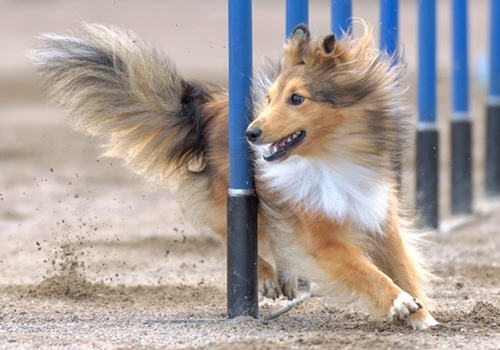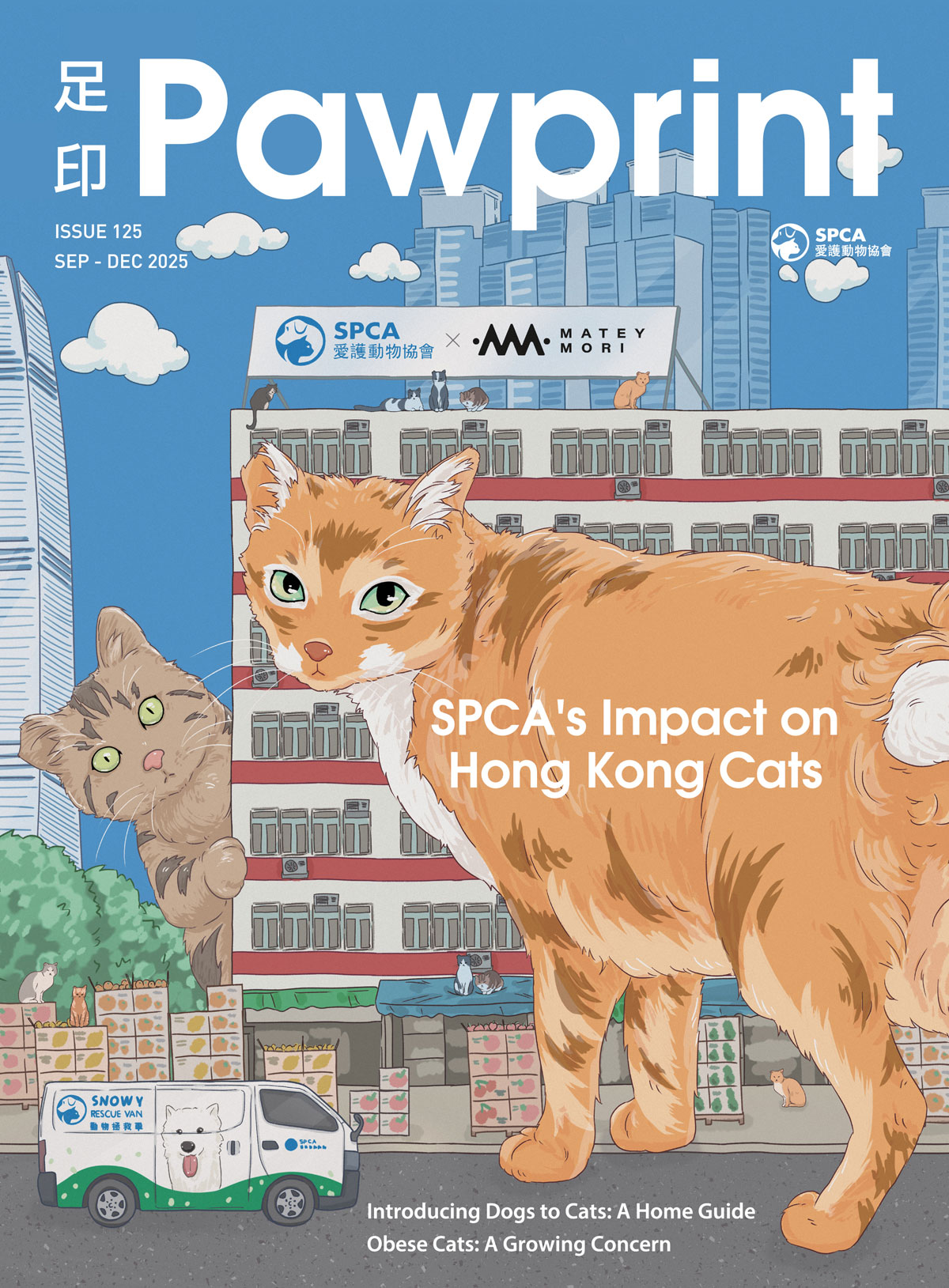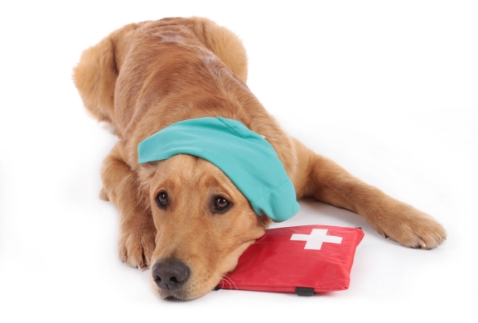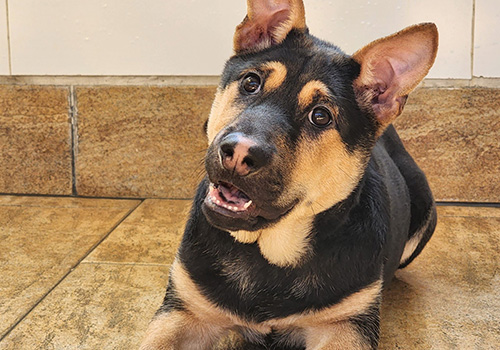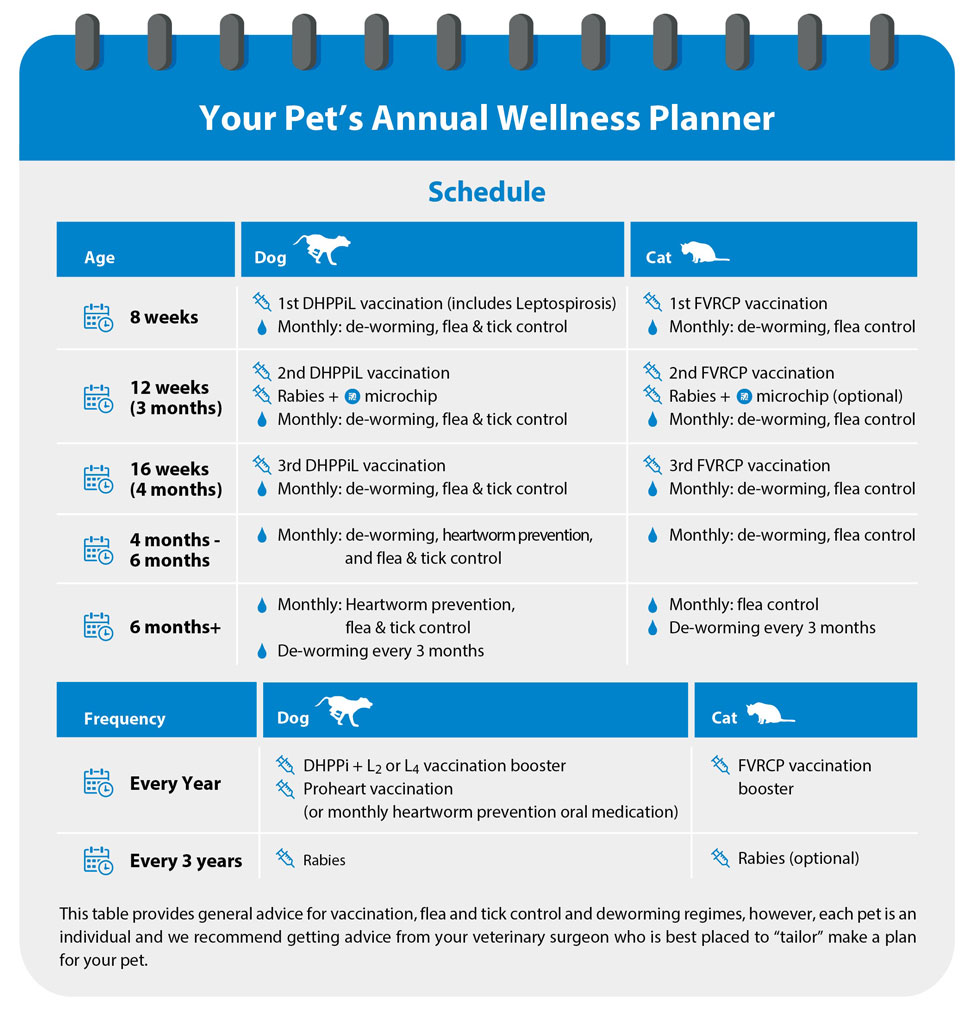
Spring Into Action
5 seasonal pet care tips
Contributed by the SPCA Chief Veterinary Surgeon
Dr. Jane Gray and the Vet Department
Now the weather is warming up, here are a few extra precautions to remember with regard to keeping your pet happy and healthy.
“An ounce of prevention is worth a pound of cure”, so we have compiled five seasonal tips for all responsible pet owners to consider around this time of year, with a yearly planner to help you keep track!
Let’s start with the basics…

1. Feeling hot, hot, hot!
With the change in weather, your pet’s appetite may decrease, whilst their water consumption could increase. Be sure to always have clean drinking water available for your pet, and avoid taking any long walks in the middle of the day, especially in unshaded areas during the hotter months.
Some breeds are also more sensitive to the heat, such as brachycephalic or flat-faced dogs, so take extra care with these types of pets. Also, obesity is a high-risk factor – keeping your pet slim and trim is vital to prevent overheating!
If you have a pet that does not like to drink water, you may want to consider feeding some wet food to help increase their water intake. If you are not sure, please ask your veterinary surgeon for advice.
2. Grooming: To clip or not to clip?
Your first instinct during the warmer months may be to take your pet for a haircut, but hold your horses!
This isn’t an issue for animals with a single coat such as Poodles, Bichons, and Shih Tzus, who will often benefit from getting rid of their thick furry overcoats!
But those with a double coat such as Samoyeds and Huskies, need a little more caution when it comes to hair care as their coats are designed to help them regulate their temperature! Shaving can remove their natural protection, affect the way their fur grows back, and potentially make them even hotter!
These breeds require brushing throughout the year – especially in spring, when they start to shed their thick undercoat.
For cats, the warmer months and increased shedding can mean an increased risk of hairballs, which can be problematic! It is vital to groom them every day, and to help ease the passage of hairballs, you can consider either specific hairball control pastes and gels, or adding steamed pumpkin to their food.
If you need the help of a “pawfessional” groomer to tame your animal’s mane, book an appointment with Hair Force One by calling 2232 5532


3. Parasite Prevention
The warmer weather means ticks, fleas, and mosquitoes are more abundant – increasing the risk of diseases such as Tick Fever and Heartworm.
Remember to regularly apply flea and tick control products such as “Frontline” or “Advantix”, and consider placing a tick collar (for example “Preventic” or “Seresto”) especially if they are walked in the countryside. With so many products available on the market it can be quite daunting to choose one – your veterinary surgeon is best placed to give advice about the right preventatives tailored for your pet’s lifestyle.
As mosquitoes are everywhere please ensure your dog is protected against heartworm disease with either a yearly injection (“Proheart”) or monthly oral (“Triheart”) or spot-on (“Selehold”) medications. We suggest starting Heartworm prevention before 5 months of age with monthly tablets until fully grown then either continuing with monthly prevention or switching to yearly injections.
4. De-worming: Don’t worm your way out of this one!
De-worming for dogs and cats is also essential with monthly dosing for puppies and kittens younger than six months, and then every three months! That’s four times a year.
Worms are wriggly creatures, which have found a myriad of ways to worm their way into your pet! They can be transmitted across the placenta of a pregnant mother to the unborn foetus, through milk during nursing, by contact with contaminated soil, or the ingestion of infected fleas or rodents!
Infection is often asymptomatic, but not providing regular preventive care can lead to potentially serious illness, so it’s just best not to risk it!

5. Leptospirosis: is your pet vaxxed?
Prevention through vaccination is always far better than cure, which is definitely the case when it comes to Leptospirosis.
With the increase in temperature, and especially after heavy rain, dogs may be tempted to drink or swim in pools or streams whilst out walking, and if inhabited by infected rats, this could be fatal.
Although not all strains may be covered by vaccination, it is important to vaccinate your dog at least once a year for an optimum level of protection. There are different vaccinations available, some of which protect against 2 (L2) and others against 4 variants (L4). In addition, there are certain areas in Hong Kong that are deemed higher risk than others, for example, the Peak, Pok Fu Lam, Lantau, and the country parks. As always, your veterinary surgeon is the best person to advise you on a vaccination protocol for your dog.
Are you up to date?
Click here To find your closest clinic and book an appointment with our vets today


